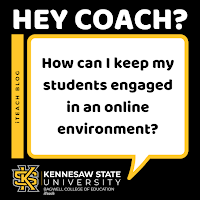Behaving Blended

The bell rings. Class starts. The same students and the same teacher enter the classroom to begin their day, except this time, they are met with more technology than any of them has ever had access to at school. The teacher is feeling a bit out of her element, and she’s losing her ground quickly against the mobile device she’s in the ring against. Students are off task, and disengaged. They’d rather take selfies than listen to her lecture. By the end of her 50 minute bout, the teacher is ready to lock up all the technology and never touch it again.
As technology permeates K12 schools across the country, folks like myself who coach and support teachers and school leaders encounter this situation more than we should. One of the top concerns of all of these stakeholders is what to do when kids 'do something they aren’t supposed to do’ on a device. Instead of focusing on creating positive culture and expectations, schools often buy into a deficit mindset.
Let’s just agree on one thing: There is no way to create a classroom in which students will ALWAYS be on task, behave perfectly, and follow the rules. What can we do then, to foster the best outcomes? How can we generate a culture where ‘Behaving Blended’ is synonymous with AWESOME?
Here are 3 ways that behavior gets better when it’s blended
Evaluation systems aren’t going anywhere, but the most savvy school leaders know how to capitalize on the opportunity to model a growth mindset.
Often my team will have conversations with school administrators that circle around the ‘elephant’ of teacher evaluation. They want to know what a successful blended/personalized classroom should look like, and what teachers should be doing. I really like the TIMS Teacher and Environment Indicators to help with this conversation. More than a checklist of desired behaviors, indicators and evaluations are an amazing opportunity to co-author an innovation plan. If a teacher traditionally struggles with redirecting off-task learners, instead of viewing the technology as another distractor, showcase how to harness it’s capabilities to engage learners!
The power of Student Voice and Choice is un-deniable.
Allowing students to co-plan their learning pathway, or to provide evidence of mastery in a variety of ways will produce behavior returns like you’ve never seen before. I’ll use myself as an example…when I am told not only WHAT to do, but also HOW to do it, and WHEN to do it…I feel really undermined. Honestly, it makes me a touch volatile. You’ve never taught a student like that, have you?? Technology allows for such great options when it comes to student workflow, and teacher productivity. For many students, having the opportunity to set learning targets collaboratively with their teacher would inherently mean they had some control. Having a series of student-led conferences or checkpoints means that the good, the bad, and the ugly are valued as a part of the learning process. There’s no ‘GOTCHA’, just an opportunity to help steer the student back to a better learning progression.
D is for Data, it’s good enough for me!
At some point in recent EDU history, DATA became a four-letter word. Well, it’s always had four letters, but now it’s spelled D***. Teachers are asked to collect data, analyze data, share data, and use data to inform instruction. That’s a TON of work. Personalized Learning is in large part dependent on technology to automate the data process, and when that happens, it means instruction can be customized to student’s specific knowledge, skills, interests and preferred pace. Valuing student data is one of the best ways for teachers to show that they are thoughtful planners and skilled pedagogically. Technology helps to make data transparent, and to provide real-time analytics to a teacher, which can help to speed up or slow down class as needed.
--
Stephanee Stephens
Director, Kennesaw State University iTeach
@ksuiteach @kennesawstate
#fcsvanguard proud
1/3 @TechTriplets *Make Learning Personal*
Director, Kennesaw State University iTeach
@ksuiteach @kennesawstate
#fcsvanguard proud
1/3 @TechTriplets *Make Learning Personal*
Opinions are my own! Some rights reserved by the author



Comments
Post a Comment